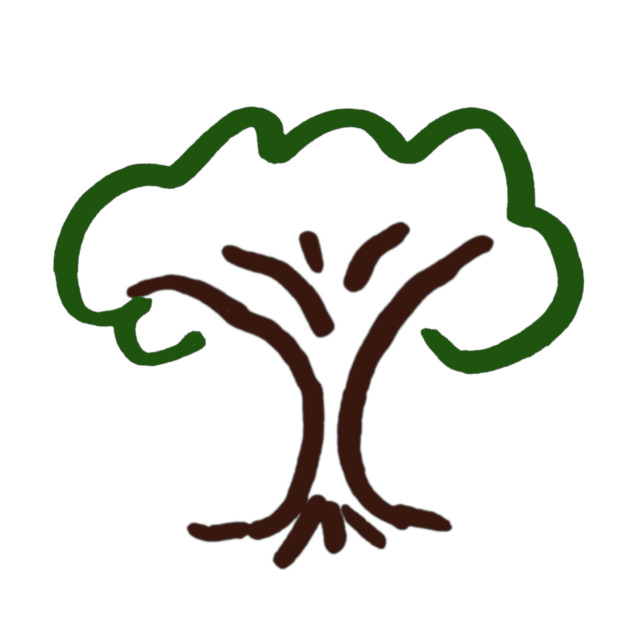Narrative therapy is built on the observation that we humans understand ourselves and the world around us through the stories that we tell. We tell these stories continually, to ourselves and to others, and other people tell stories about us.
Not all of these stories are true, or kind, or helpful.
Although we largely cannot control the stories that others tell, we can become more conscious of the stories that we tell, particularly about ourselves. Learning — and choosing — to retell the stories of our lives in kind and helpful ways is the foundation of Narrative Therapy.
As we learn to do this, it can be helpful to have a metaphor that provides the structure of a story. And to be effective, such a metaphor has to be something simple, familiar, and meaningful.
One metaphor familiar to just about everyone is a tree.
I think that I shall never see
Joyce Kilmer, “Trees”, 1913
A poem lovely as a tree.
To get familiar with the metaphor, I invite you to think about a tree.
There are some written instructions below, but for many people, the exercise will work better if you close your eyes and listen, so I’ve recorded them here for you:
I’m also providing a print-friendly version that you can take with you somewhere without your devices.
| Tree visualisation meditation To begin, find a position either sitting or lying down, making yourself as comfortable as possible. I invite you to close your eyes, or to soften your eyes’ focus and direct your gaze downwards. Start to direct your attention to the sensations of your own body. Simply notice where your body is supported: the feel of the chair, or floor, or bed where you are sitting or lying The feel of surface on which your arms are lying The feel of anything that’s under or behind your head. Notice the touch of your clothes against your body And as you sit or lie here, begin to notice your breath. Don’t attempt to change it in any way, just notice its natural rhythm as you inhale and exhale. Notice how the air feels as it flows through your nose and mouth Notice the rise and fall of your chest and belly From this base of your own body, imagine a tree. A single, solitary tree growing somewhere in the ground. It is a living tree with a full canopy of leaves. Picture it from a distance where you can take in the whole tree without having to crane your neck to see it. Start to notice some details about it. What kind of tree is it? How big is it? Notice the leaves of its canopy. What colour are they? Are they bright and vibrant or are they dull? Do they look well hydrated or are they dry? Can you see any flowers or fruits among the canopy? In your mind’s eye, take in the details of the canopy. Now let your eye wander down to the trunk of the tree. Notice the colour of its bark. Notice its texture: does it look rough or smooth? Is the bark all healthy, or can you see any damage to the trunk? Is the trunk straight or is it twisted and knotty? In your mind’s eye, take in all the details of the trunk. Let your eye come down to the base of the tree, to where it meets the earth. Notice how this tree is planted in the ground. Notice any roots that you can see above the ground. Notice the stability of the tree. Now listen to the tree. What can you hear? What do its leaves sound like as the wind passes through them? Can you hear birds singing or animals moving in its branches? Listen carefully and notice what you hear. Finally, approach the tree. Walk up to it. As you approach, take in more and more detail of the bark you noticed earlier. Notice the light and shadow of its texture. As you come close, notice if you can smell this tree. Can you smell its woodiness, or the moisture on its leaves? What can you smell? As you reach the tree, reach out your hand and touch its trunk. Run your hand over its surface. Notice how rough or smooth it feels under your fingers. Notice how wet or dry it feels. If there is a leaf within reach, rub it gently between your fingertips and notice its texture too: rough or smooth or even waxy, wet or dry, thick or thin? Step in closer and wrap your arms around this tree and give it a big hug and thank it for letting you get to know it today. We are now ready to begin our main exercise. When you’re ready, let your eyes gently open, and return to the room. |
Next steps
In a Tree of Life workshop, I now guide you to deepen this visualisation and to identify different parts of the tree with different facets and stages of your life.
And as you do so, to reflect on:
- yourself
- your direction
- the connections between your values, your skills, and your life experiences
- the blessings you bring to the lives of others
- your legacy
Ultimately, from this, you create one new, kinder, and more helpful story to tell about your life. You might even learn to see something new in yourself, whether big or small.
